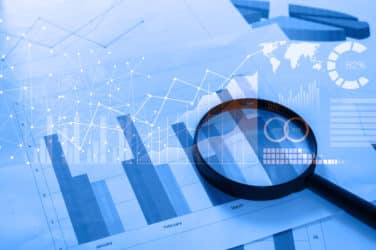
The recommendations made by the Financial Stability Board’s Task Force on Climate-Related Financial Disclosures are building critical mass amongst investors according to new research.
The TCFD developed recommendations for disclosing climate-related financial risks that may be used by companies to provide information to investors, lenders, insurers, and other stakeholders and issued its final report in June 2017.
Yesterday the Institute and Faculty of Actuaries Resource & Environment Board and the Principles for Responsible Investment hosted a webinar – TCFD: Leaders and Challenges.
Edward Baker, senior policy adviser, climate and the energy transition at the PR, said on the webinar that voluntary climate risk reporting for PRI signatories was introduced in January 2018, based on the TCFD with 23 questions.
The PRI, initiated by former UN Secretary-General Kofi Annan, was launched in 2006 to commit institutional investors, asset managers and service providers to building a more sustainable global financial system. More than 2,500 organizations from around the globe have so far signed up.
This year 1,707 asset managers and owners were eligible to report to the PRI. In total 591 investors with $49 (€45) trillion in assets under management responded, with 221 choosing to make their responses public. The PRI is due to publish a snapshot of climate reporting next week.
Baker said: “Adoption of TCFD is building critical mass among investors.”
Climate risk reporting on governance and strategy indicators will become mandatory for 2,000 investor PRI signatories from the end of March next year.
TCFD progress
The task force issued its latest progress report in June this year.
Our latest @FSB_TCFD Status Report finds that more clarity is needed on the potential financial impact of climate-related issues on companies #TCFDRecs #ClimateRisk https://t.co/RPdzlwq53X pic.twitter.com/ozkKp991We
— TCFD (@FSB_TCFD) June 5, 2019
Baker said in a blog at the time that the number of organisations supporting the TCFD is growing. Official private company supporters reached 785, up from 100 two years ago and 500 last year, which collectively have responsibility for $118 trillion in assets.
“The percentage of companies surveyed by the task force disclosing climate-related information has increased by 15% over the past two years,” he wrote. “The influence of TCFD has also spread beyond Europe and North America, notably with the recent establishment of Japan’s TCFD consortium.”
However he noted that analysis of disclosures, as well as a survey of TCFD supporters, show that preparers still find climate scenario analysis and metric recommendations difficult to implement.
“Of the 1,449 PRI signatories who were eligible to respond to the PRI indicators in 2018, only 9% of asset owners and 4% of asset managers indicated they had done scenario analysis,” Baker added. “This contrasts with response rates of over 30% for other indicators.”
Scenario analysis
David Lunsford, head of development & co-founder at Carbon Delta, spoke on the webinar about how the data provider has been helping firms conduct scenario analysis. Carbon Delta has been providing data for four years to help them identify and analyse transition and climate impacts of 22,000 companies globally.
Lunsford said on the webinar that carbon footprinting is backward looking while developing a climate value at risk (VaR) is forward looking.
He added: “Moving from carbon footprint to scenario analysis is an ambitious step forward.”
Carbon Delta and Vivid Economics helped the UN Environment Finance Initiative (UNEP FI) and 20 institutional investors from eleven countries launched investor guidance in May on implementing the TCFD disclosures.
Maurice Tulloch, chief executive of insurer Aviva, said in the report: “Investors have a central role to play in moving the world to a low carbon future; this collaboration shows how we can all take better decisions, for our customers and for the environment. Aviva will keep calling for proper disclosure from the companies we invest in, while working with regulators and policymakers to make sure capital markets properly take account of these risks. The cost of doing nothing is far greater than any costs incurred by taking action.”
Aviva
Ben Carr, analytics and capital modelling director at Aviva, spoke on the webinar about using the UNEP FI recommendations in the insurer’s 2018 TCFD report and in assessing the potential impact on the firm’s business. He leads Aviva’s multi-disciplinary project team working on the development of scenario analysis to support disclosures consistent with the TCFD recommendations.
Carr said: “We believe that this type of collaborative initiative is absolutely essential to ensure successful implementation of the TCFD and address current market failures in pricing climate-related risks and opportunities.”
Aviva has used Carbon Delta’s warming potential metric to assess corporate credit and equities shareholder funds’ alignment with the Paris agreement 2°C target.
“The actions we are taking to reduces our investment exposure to carbon intensive sectors over time should lead a reduction of the warning potential of our portfolio,” he added.
Aviva has also developed a Climate VaR measure using output from the UNEP FI investor pilot project and Carbon Delta as well as Elseware a risk management and quantification expert consultancy.
“This measure enables the potential business impacts of future climate-related risks and opportunities to be assessed in each of the Intergovernmental Panel on Climate Change scenarios and in aggregate,” said Carr.







